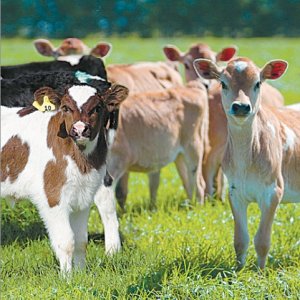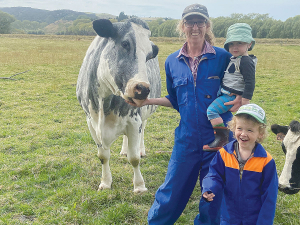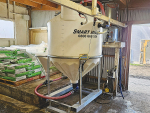“Calves are born without immunity and therefore have no defence mechanism against bacteria and viruses. Immunity for newborn calves comes from Immunoglobulins (lgs) present in their mother’s colostrum.
“It is essential a calf receives 10% of its body weight in colostrum in the first 10 hours of its life – the optimal time when cell ‘gaps’ are open along the small intestine wall to allow the transfer of lgs. After 10 hours these cell ‘gaps’ close so no further transfer can occur. First-milk colostrum is the best as it contains the most lgs, when compared to the second milking.
“It is important to never assume the calf has had adequate colostrum from its mum; tube feed if in doubt.”
Oakley says farmers need to carefully consider what to feed a calf.
“Rearing calves using the best available knowledge through a well managed calf rearing system will give every chance to get the development of the calf right, turning it into a healthy, profitable animal.
“You need to be thinking about what the feed offers, what it contributes to rumen development and body growth. Other things to consider are how much milk a calf needs, when to introduce meal and whether they can digest and use the nutrients in the meal.”
A newborn pre-ruminant calf has four stomachs but the rumen is only 20% of its mature size. This means it requires the feed to be in a form that can be utilised by the growing finger-like projections called papillae that absorb many of the nutrients for growth and later milk production. According to research, by eight weeks of age the number and size of papillae are set for life.
“It is important to maximise the limited time available for rumen papillae development. Milk alone does little to develop these papillae and forages don’t provide sufficient or the correct profile of volatile fatty acid (VFA) needed for effective papillae development.
“Only one product, RumenX, encourages the correct VFA profile needed to maximize papillae growth from an early age,” Oakley says. [This] presents the nutrients including starch to the calf in a useable form. The manufacturing process ensures the starch is already in a form rumen bacteria can digest.”
For a calf to break down the starch present in solid feeds to glucose (then VFA), there needs to be adequate amylase present in the gastro-intestinal tract (GIT) to facilitate this. It takes up to three weeks for the pancreas to be sufficiently developed to produce sufficient quantities of amylase, so many of the starches present in meals are inadequately digested at an early age which is why RumenX can be fed from day four.
“A feature of the RumenX product is the reduced amount of milk needed to grow a well prepared calf,” Oakley says.
“This allows earlier weaning from milk and onto solid feeds earlier than most traditional systems. Calves are weaned onto meal and then pasture according to dry matter intake when they are ready, not based on age or liveweight.”
Having a solid foundation to build on is essential to what happens to the calf becoming a well grown R2 heifer ready to milk.
“A well-managed calf rearing system that applies attention to detail is paramount to a successfully, well reared calf meeting the farm objectives.”















